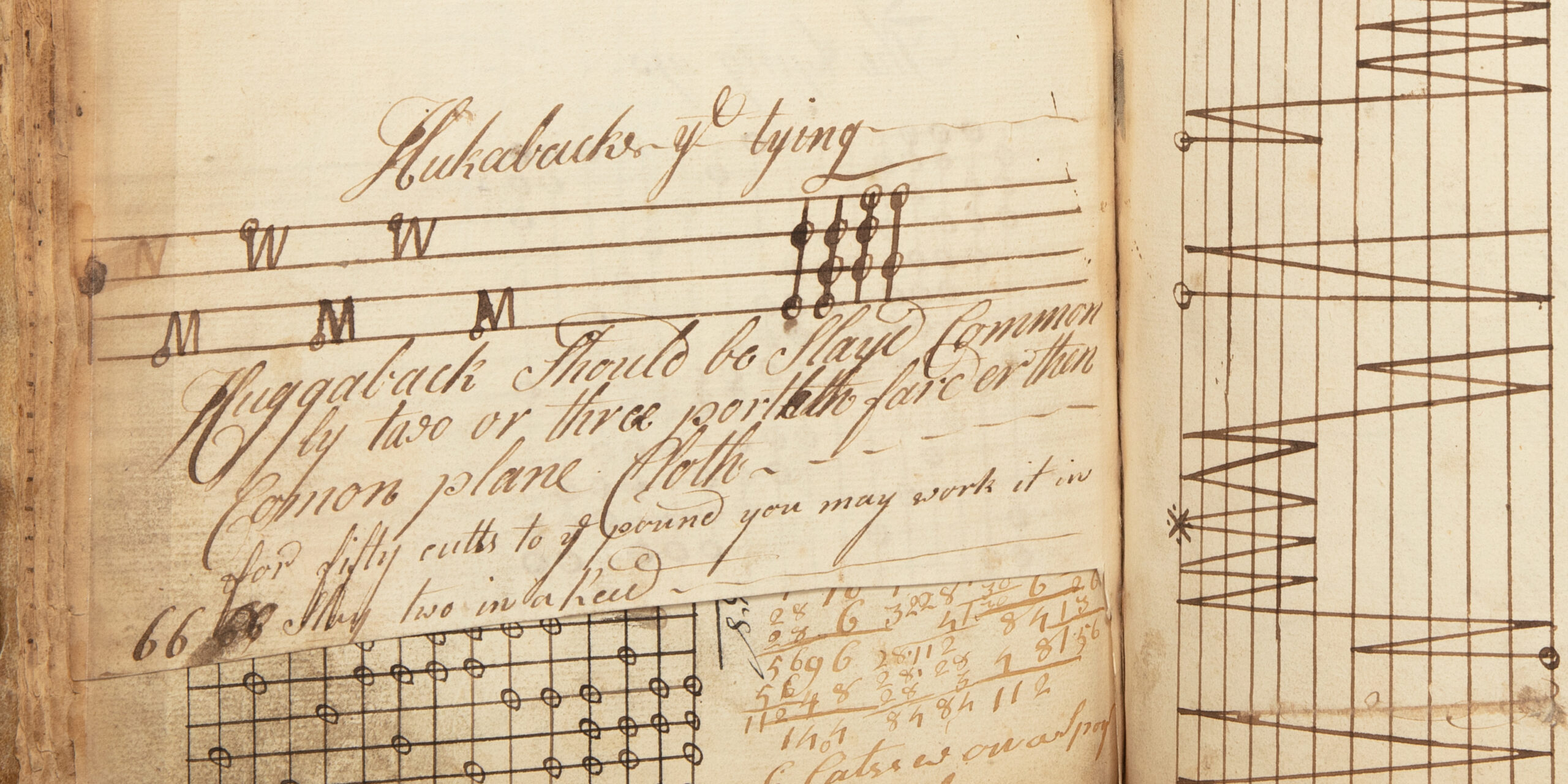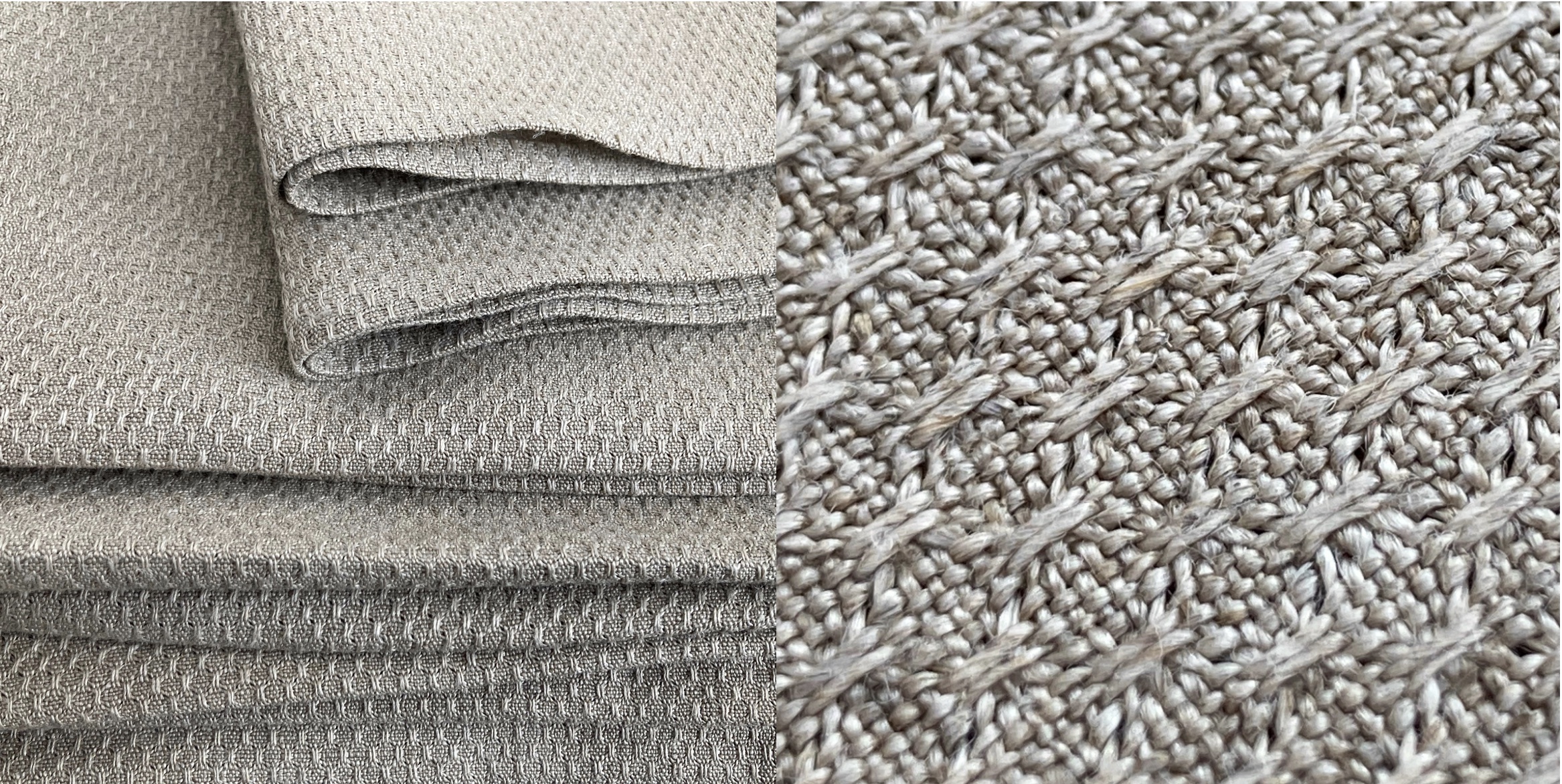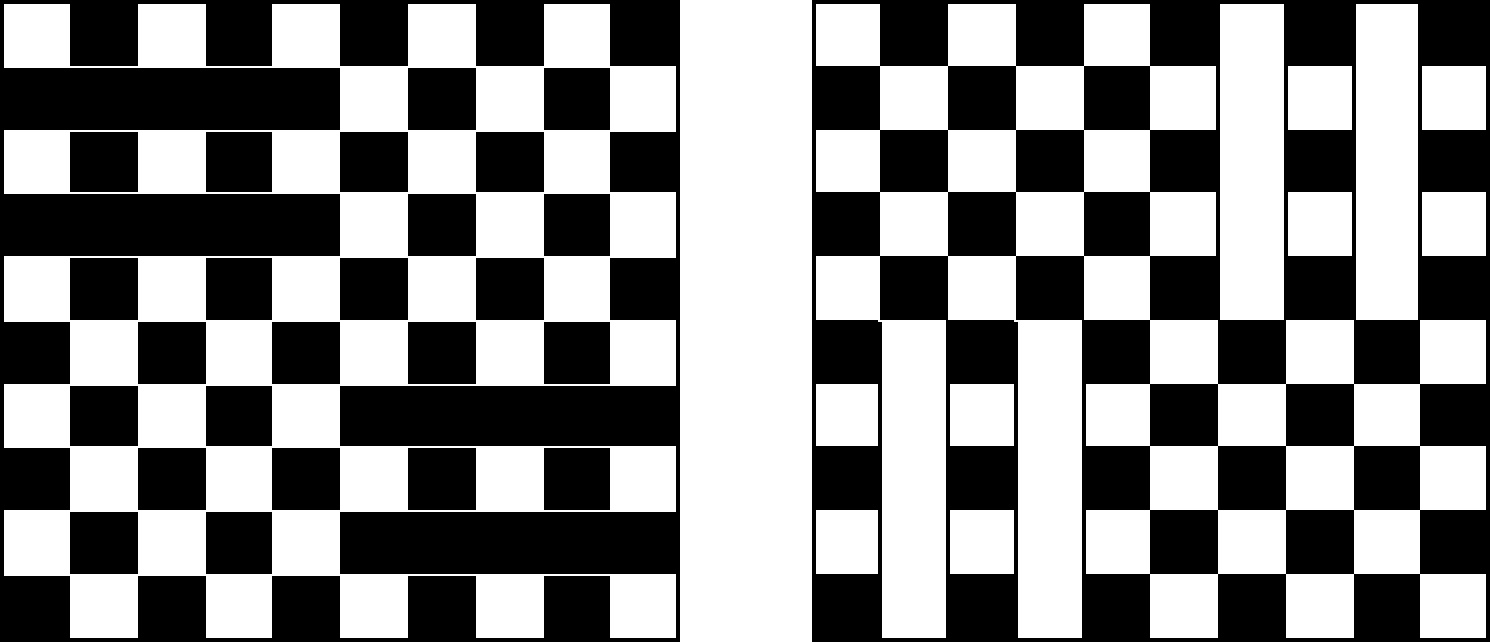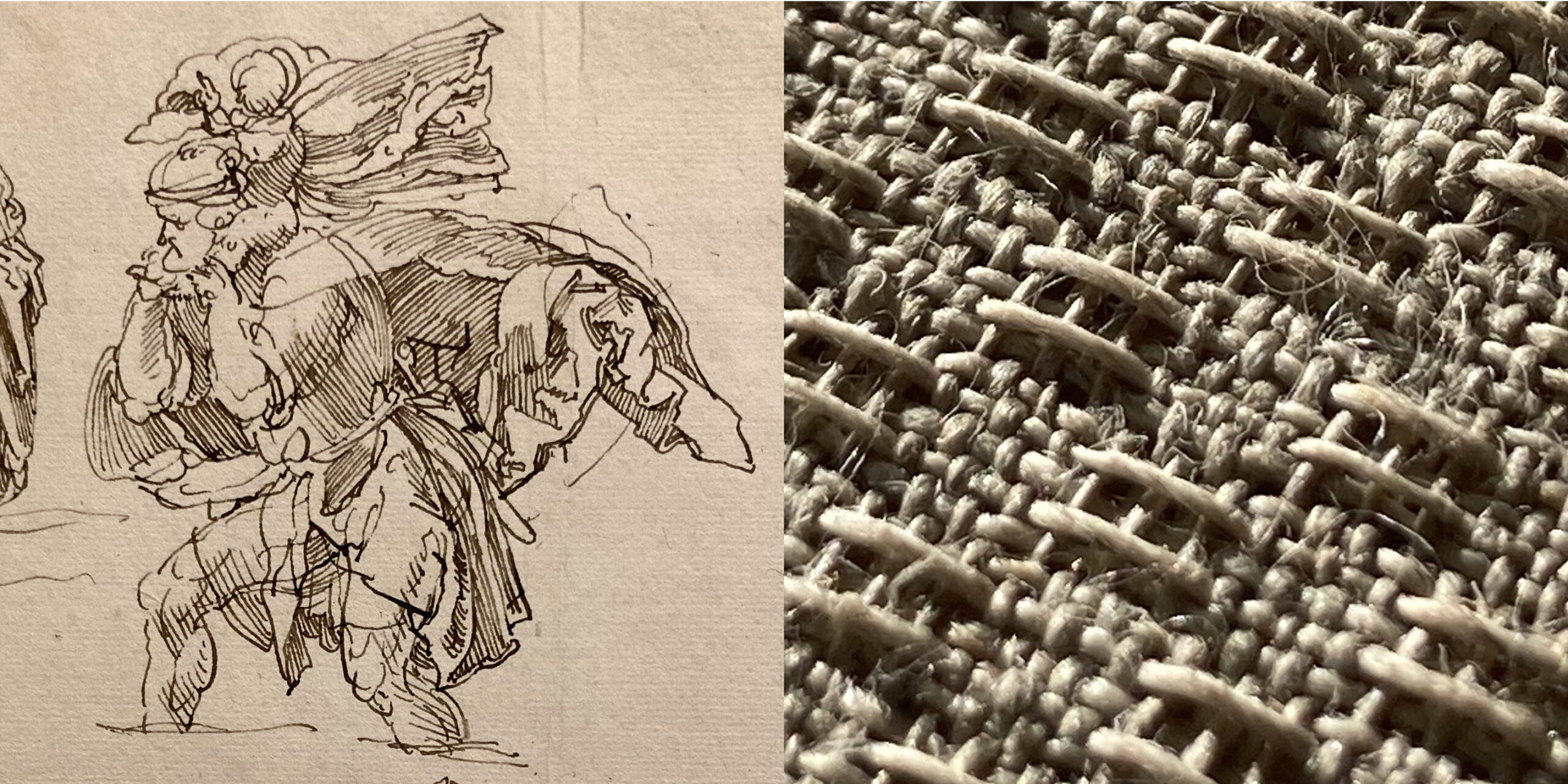Like most old words it has been spelled in various ways, including huccaback, hukkaback, hukaback, hugaback, hag-a-bag, hagabag, huggaback and huck-a-back, before becoming standardised as huckaback, sometimes shortened to just huck. Usually singular, occasionally plural, as in the weavers’ draft for ‘hukabacks’ in the Thomas Jackson manuscript from the mid 1700’s.1
*
The Oxford English Dictionary defines huckaback as: “A stout linen fabric, with the weft threads thrown alternately up so as to form a rough surface, used for towelling and the like” and “a noted product of the North of England.”2 The name is sometimes used by weavers to designate the weave structure regardless of the yarn type, but huckaback was historically a linen cloth made from the fibres of either flax or hemp.3 Weft threads are thrown up on one side and warp threads on the other, making the front and back slightly different. The long warp and weft ‘floats’ give huckaback its characteristic texture.
*
The earliest dictionary listing I have found is in Nathaniel Bailey’s Universal Etymological English Dictionary of 1731 where it is defined as “a sort of linen cloth that is woven so as to lie partly raised.” The earliest printed use of the word huckaback listed in the OED is in The Merchant’s Ware-house Laid Open: or, the Plain Dealing Linnen-draper from 1696, where Huckaback appears amongst a dazzling array of textiles described alphabetically from Alcomore, Bore-lap and Cambrick to Sleasie, Ticklenburs and Vehemounty.
There is some evidence to support the OED’s claim about huckaback being made in the North of England. During his ‘Tour’ of 1724-7 Daniel Defoe found it manufactured in Darlington, which “particularly excels in Huggabags of Ten Quarters wide, which are made nowhere else in England”; and in Warrington, which held a weekly linen market specialising in “a sort of Table linen, called Huck-a-back.” 4 There is also evidence that huckaback was being made in East Anglia in the early 18th century,5 and in Shropshire.6 It is likely that such a useful textile, neither fancy nor difficult to weave, was made across Britain in those areas where linen weaving was practiced.
The etymology of huckaback is uncertain, but there is a striking resemblance to the German huckepack, equivalent to the English piggyback, historically pickaback, pick-a-pack, pickapack etc. The OED refers to speculations by Walter William Skeat in An Etymological Dictionary of the English Language, published in 1888: “The word bears so remarkable a resemblance to Low G. hukkebak, G. huckeback, pick-a-back, that it seems reasonable to suppose that it at first meant ‘peddler’s ware;’ see Huckster.”
Huckaback is followed in Skeat’s dictionary by Huckle-bone, and then Huckster (peddler). He discusses their shared origins: “The etymology is much disputed; but it is solved by Hexham’s Du(tch) Dict(ionary) which gives us hucken, to stoop or bow… Nothing could be more fitting than to describe the peddler of olden times as a croucher, creeper or slinker about; his bent back being due to the bundle upon it… So also G. hucke is properly the bent back, whence G. huckepack, pick-a-back.”
The resemblance between huckaback and huckepack is compelling, but I think Skeat’s conclusion – that huckaback is so called because it was once hawked by peddlers – is wrong. Why should this cloth be singled out amongst the many that peddlers must have carried? I believe a more plausible explanation concerns the form of the huckaback weave structure, which Skeat and other etymologists may have been unaware of.
*
The huckaback structure involves an alternation between tightly woven and loosely woven areas with long ‘floats’. There are a number of variations but the common form has five ends (warp threads) and five picks (weft threads) in each unit, and is characterised by pairs of floats lying on the surface. On the loom, the top face of the cloth has pairs of picks (shown on the left in black in the diagram above) which float crosswise over five ends, while the underside has pairs of ends (shown on the right in white) which float lengthwise over five picks. These arching floats literally ride piggyback on a tabby-weave ground.
A piggyback rider typically wraps two arms horizontally round the carrier’s neck, legs dangling in front. Isn’t there a resemblance between the pairs of floats in the huckaback weave structure and the arms and legs of the piggybacker? Could that be why it became known as huckaback, the piggyback cloth?
*
Notes
- See my post: Weavers’ Thesis Book: the Thomas Jackson Record
- Oxford English Dictionary, s.v. “huckaback (n.), sense c,” July 2023, https://doi.org/10.1093/OED/9603441389.
- In England the term linen was historically used to designate fabric made from either flax or hemp.
- Daniel Defoe. A Tour Through The Whole Isaland of Great Britain. Volume 3. Fifth Edition (1753). p.155 & 241
- The East Anglian Linen Indutry: Rural Industry and Local Economy 1500-1850, by Nesta Evans (1985).
- The Linen Industry of Shropshire, Hilary Green (1981), (article), in Industrial Archaelogy Review, Volume V, Number 2, Spring 1981.



